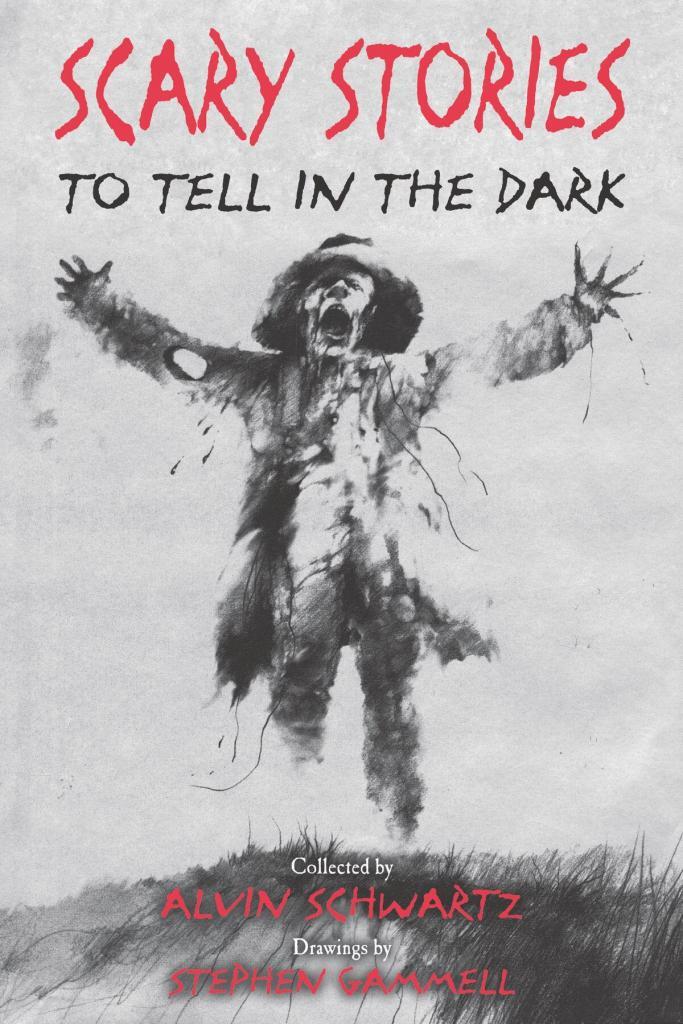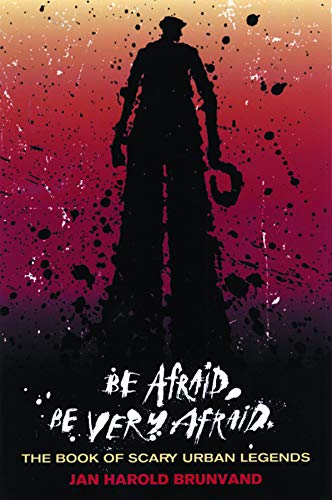Urban legends are all fun and games until you hear scratching at your window, and start to wonder if it’s the escaped mental patient with a hook for a hand. Good times. Passed down for decades, or even centuries, these tales are believed to have happened “to a friend of a friend,” and often contain terrifying elements from both the real world and otherworldly realms. Sure, the serial killer hiding in the upstairs attic as he makes mysterious calls to the babysitter downstairs is a classic example of real-world horror. But don’t underestimate the power of Bloody Mary, the game played by teenagers across the world as they chant in front of their mirror hoping to witness a ghostly apparition. While often told at sleepovers or around the campfire, these tales are also scarily fun to read on your own… in the form of a classic paperback book that pays tribute to these age-old stories. Folklore has never felt so good in your hands, and you’re about to discover a new type of horror with these horror books about urban legends.
Scary Stories to Tell In the Dark
Author: Alvin Schwartz
Published: 1981
Any 90’s kid will remember Scary Stories to Tell in the Dark – a children’s book about hauntings and urban legends that many have argued is not for children at all. And can you blame them? Besides the references to urban legends like the man with a hook for a hand, or the one who fled to Baghdad to escape an appointment with Death… the illustrations in this book are simply terrifying. Regardless of how many decades ago you read this book in the school library or under the covers with a flashlight, it’s not easy to get the image of The Haunt out of your head. And if you’re brave enough, just Google it. After you’ve ordered your new copy of Scary Stories to Tell In the Dark, watch the 2019 movie for even more childhood nostalgia.
Be Afraid, Be Very Afraid: The Book of Scary Urban Legends
Author: Jan Harold Brunvand
Published: 2004
All the stories you’ve heard around the campfire come to life in Be Afraid, Be Very Afraid. Jan Harold Brunvand is a professor and folklorist who has dedicated his entire career to the art of urban legends – and you’ll be shaking, crying, and laughing with this collection of tales old and new. You’ve definitely heard a million adaptations of the babysitter who receives mysterious calls from the man upstairs, but what about the snake in the strawberry patch? Or the Mexican dog that wasn’t even a dog? One of the most scary aspects of urban legends? Most of them can definitely still happen in real life, even if it’s seemingly rare, and this book will bring out your deepest fears in the best way.
Urban Legends: Bizarre Tales You Won’t Believe by James Proud
Author: James Proud
Published: 2016
Sure, you love the traditional urban legends that you’ve heard for years… but sometimes you’re in the mood for something a bit weird. Like alligators in the subway or a two-headed dog. Oh and aliens, all the aliens. Skeptics need not read this collection of beautifully bizarre stories, which may or may not give you weird dreams. Not nightmares, per se, but dreams about unknown creatures that aren’t exactly evil, just misunderstood. Just like us.
The Creepypasta Collection: Modern Urban Legends You Can’t Unread
Author: MrCreepyPasta
Published: 2016
Yes, it’s those Creepypastas. The horror stories you’ve seen posted around the internet – telling the tales of ghosts, demons, serial killers and otherworldly creatures. But the world wide web is a big place, and these new-age chronicles are somehow even more frightening when placed in good, old-fashioned print. Discover these tales of modern terror with The Creepypasta Collection, including some of the popular stories you may have read online. Ben Drowned, Jeff the Killer, Ted the Caver… oh, and Slenderman. The tall and terrifying creature that launched countless nightmares, YouTube documentaries, and even a feature film. Take a break from the decades-old urban legends, and treat yourself to this collection of new horror stories.
Superstitions: A Handbook of Folklore, Myths, and Legends from around the World
Author: D.R. McElroy
Published: 2020
A book about urban legends that’s both spooky and educational? What more could a horror enthusiast want? You won’t just hear about the most common legends and superstitions across all cultures – you’ll also learn exactly why they’re a “thing,” and how they’ve affected certain communities over the centuries. For example, did you know that the number 13 is considered lucky in Italy – despite being a symbol of bad luck in the United States? Or that the seven years of bad luck that supposedly comes when you break a mirror, originates from the Romans and their glass mirrors? The main goal of this book isn’t to terrify you, but to teach you about the origins of the most popular urban legends and superstitions. As it turns out, it does both!
Scary Urban Legends
Author: Tom Baker
Published: 2010
After you’ve finished reading D.R. McElroy’s sophisticated handbook on urban legends, you might just be in the mood to tremble with every page turn. And that’s exactly what you’ll get with Scary Urban Legends. It’s a collection of all the scary stories you heard around the campfire in high school, and possibly even did on a dare once or twice. Looking at you, Bloody Mary. Share it at a scary sleepover or simply read on your own time to discover the horrors of hitchhiking ghosts (not the Disney kind,) serial killers, and swarms of insects. Because as Jack Skellington once said, life’s no fun without a good scare.
Creepy Urban Legends
Author: Tim O’Shei
Published: 2010
Even if you’re not usually much of a reader, you can still uncover all the details of your favorite creepy urban legends with this book. In only 32 pages. It has major Scary Stories to Tell in The Dark Vibes, telling the tales of your favorite urban legends in a simple way. It’s perfect for beginners, or those who want to read about their favorite superstitions and stories before watching the movie it was based on.
Say Her Name
Author: Juno Dawson
Published: 2010
Bloody Mary is one of the greatest urban legends of all time. So great, in fact, that she inspired this terrifying tale by Tim O’Shei – in which a group of teenagers unknowingly summon her from the afterlife. And not the same night they chanted her name in the mirror, either – but with a sneak attack that includes threatening messages on the bathroom mirror and strange everyday occurrences. The things you’ll do to get your high school crush to notice you, are we right? The three teenagers must find out a way to save themselves before their five days are up, and Mary comes for them like she has countless others.
Urban Legends: 666 Absolutely True Stories That Happened to a Friend…of a Friend of a Friend
Author: Thomas J. Craughwell
Published: 2005
Friend of a friend of a friend. It’s the basis of most urban legends, and these stories come together in this book by Thomas J. Craughwell. They’re scary, hilarious, and often extremely inappropriate… ranging from the alligators that supposedly roam in NYC sewers to the new parents who left their baby on a car roof. That’s right, it gets dark. You’ll be feeling all sorts of things with 666 Absolutely True Stories, and you can even convince your friends to read it for all the “did it happen, or not?” debates.
Encyclopedia of Urban Legends
Author: Jan Harold Brunvand
Published: 2004
Another book from the father of folklore, Jan Harold Brunvand. He’s here to answer all your questions about urban legends, alphabetized and ready to discuss each one’s history and contribution to popular culture. And we’re not just talking about the much-talked-about tales that have been made into movies, but urban legends so weird and obscure that even your most folklore-obsessed friends will say “what?” Become a scholar of scary and supposedly true stories with this encyclopedia by Jan Harold Brunvand, and don’t forget to read his entire collection of books on urban legends!
If you want more Urban legends and paranormal lore check out our Encyclopedia of Supernatural horrors.

I am a lifelong pop culture junkie with immense passion for all forms of art and entertainment. On a typical weekend, I can be found at a concert or musical, chasing ghosts on the Haunted Mansion at Disneyland, or watching way too many makeup tutorials on YouTube.


